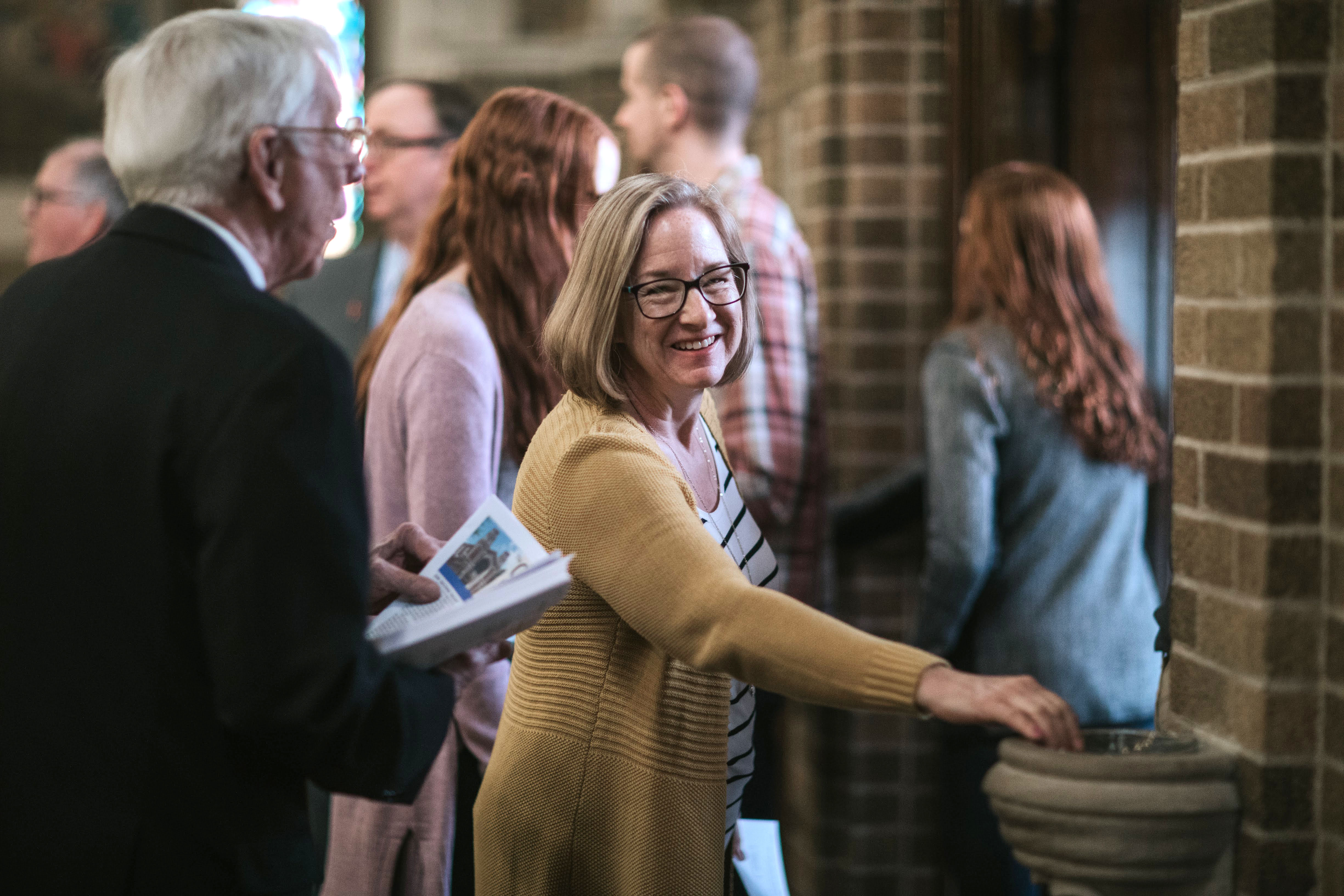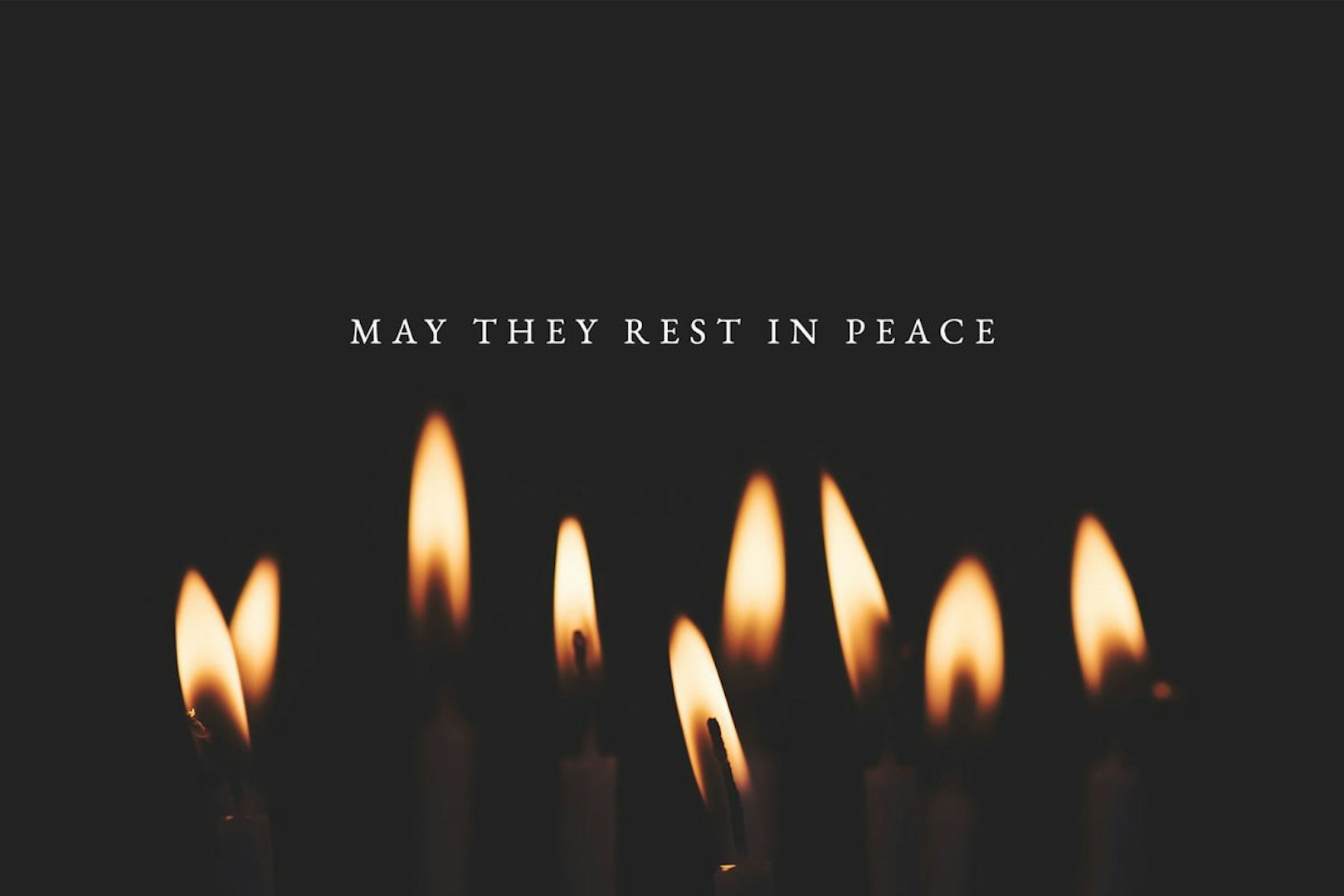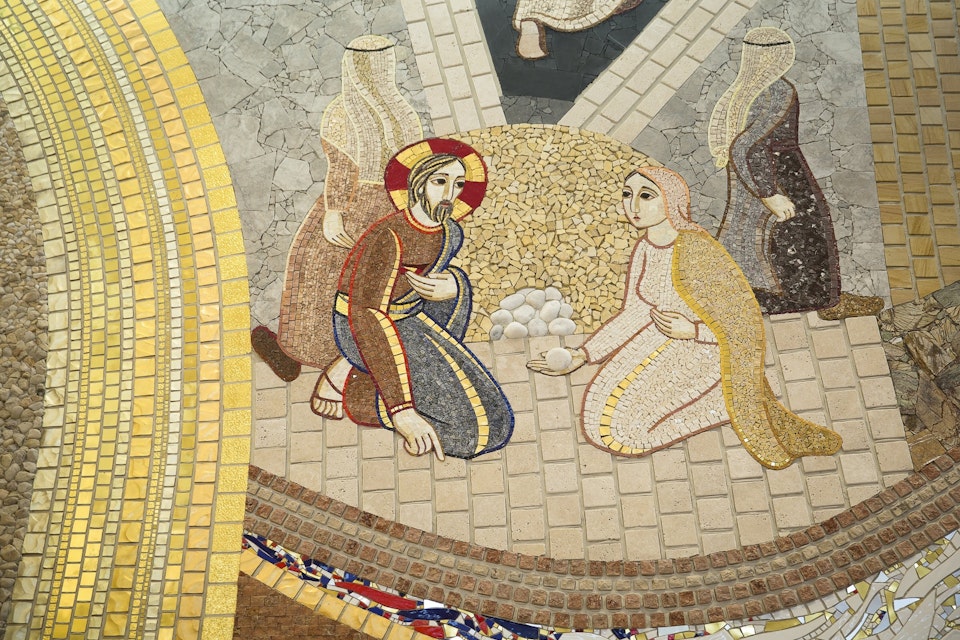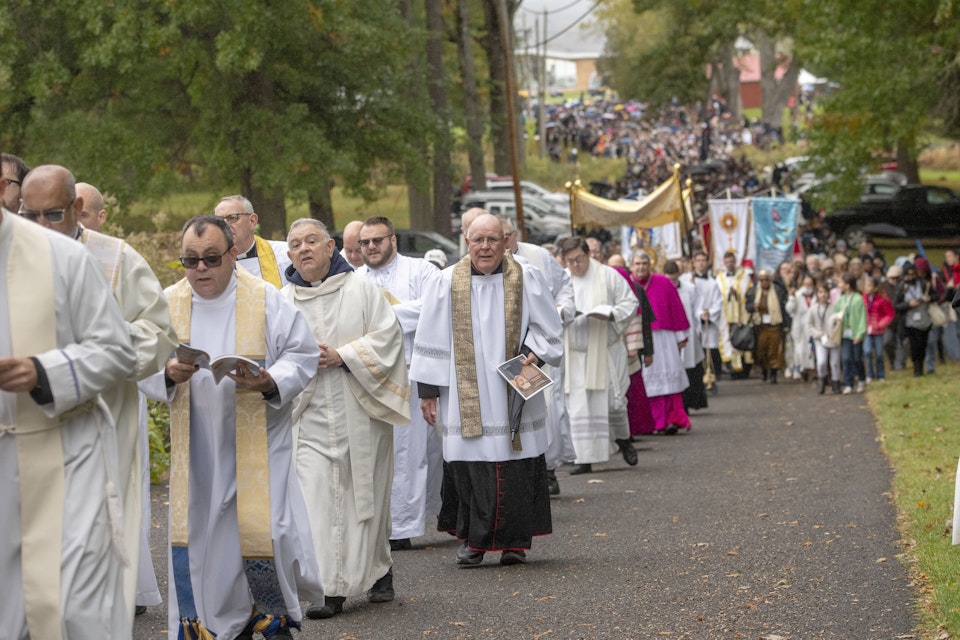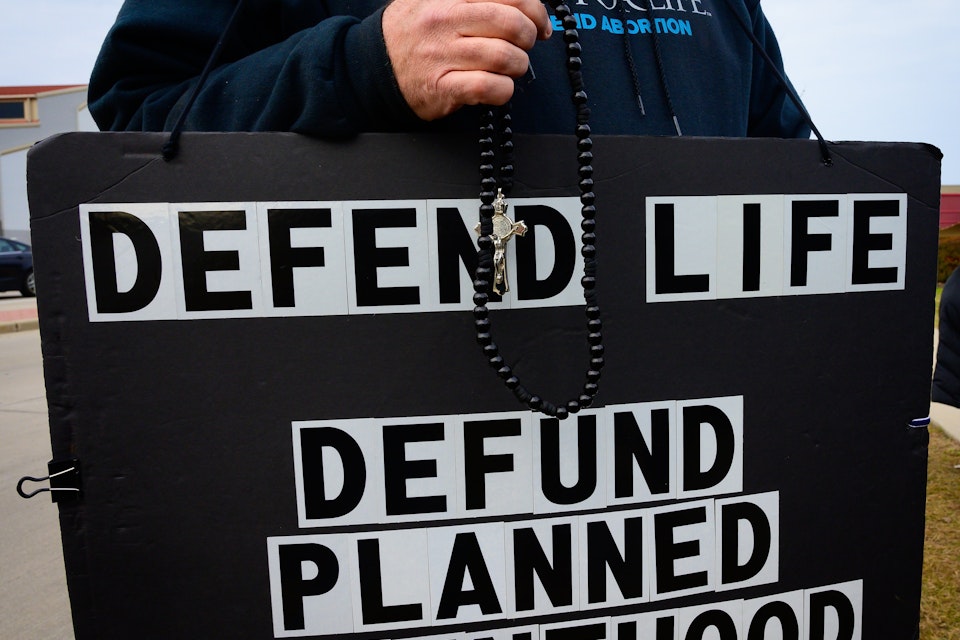Key terms to know, frequently asked questions about the Archdiocese of Detroit’s transition to a new parish governance model on July 1
DETROIT — Today, the first wave of Families of Parishes begins operating together in the Archdiocese of Detroit.
The historic change to parish structures was announced last year, when Archbishop Allen H. Vigneron and his leadership team discerned that a renewal was needed to reposition parishes to be “radically mission-oriented” as they face the challenges of 21st century evangelization.
Since the plan was announced during Pentecost 2020, leadership teams at the parish, family and archdiocesan levels have met to pray and discern how the changes would take place.
Half of the archdiocese’s 218 parishes will join together in new groupings starting today, July 1, 2021, while the other half will begin operating on July 1, 2022.
As the first wave of 26 parish families begins operating today, here’s what you need to know.
Key terms
Family of Parishes: A Family of Parishes is a group of generally three to six parishes in a geographic region that will work closely together, sharing clergy and resources to advance the mission of evangelization. A “Family of Parishes” is not a merger or cluster, and each individual parish in the family retains its own canonical identity.
In Solidum model: One of two models of parish governance under which Families of Parishes will operate, along with the “One Pastor” model. In the In Solidum model, a group of family-pastors share responsibility for a Family of Parishes, with help from family-parochial vicars and deacons. One pastor among the group will serve as a “moderator” for the family. Although priests may primarily minister at one or two parishes, they will share responsibility for every parish in the family.
“One Pastor” model: The second of two parish governance models under which Families of Parishes will operate. In this model, a single pastor assumes responsibility for all parishes in the family, assisted by parochial vicars and deacons.
Moderator: The priest who will serve in a “first among equals” role in an In Solidum Family of Parishes. The moderator’s role is to serve his brother priests by assuming much of the responsibility for the family’s administration, speaking on behalf of the family and exercising the role of tiebreaker in discussions among family-pastors.
Family priests covenant: An agreement among priests serving a Family of Parishes about how they will live, serve and collaborate together for the good of the parish family.
Mission direct: A term referring to the ministries and areas of a parish that directly interface with the faithful, charged with advancing the family of parishes’ mission of evangelization. These areas might include religious education, worship or Christian service roles, among others.
Mission support: A term referring to areas of ministry that work more “behind the scenes,” but are nevertheless critical to achieving the Family of Parishes’ mission. These might include finance, information technology, administration or human resources roles, among others.
Family Pastoral Council: A new consultative body within a Family of Parishes. The purpose of the FPC is to provide input to the “one pastor” or moderator regarding the overall mission and direction of the family. Two parishioners from each parish will serve on the Family Pastoral Council, along with each of the family’s priests.
Family Leadership Team: The Family Leadership Team (FLT) will consist of approximately 4-6 members acting as a consultative group to the “one pastor” or moderator, especially regarding major decisions of the Family. Members of the FLT may include lay ecclesial ministers, lay leaders, deacons, or priests, but the FLT should not be dominated by members of the clergy.
FREQUENTLY ASKED QUESTIONS
Why is the archdiocese making these changes now?
The shift to Families of Parishes is a response to Synod 16, which called for a complete renewal of structures to make parishes “radically mission-oriented.” The goal is to make parishes places where individuals and families can encounter Jesus anew, grow as disciples, and be equipped to be witnesses the Risen Christ.
In addition to this, the current health and economic crises have accelerated the need to make changes. In addition to the already problematic priest shortage, the Church now has fewer material resources to keep its mission active. Archbishop Vigneron, in consultation with clergy and lay advisors, has determined that now is the time to act.
The mission hasn’t changed, but how the archdiocese approaches that mission is shifting in response to the present circumstances.
How will Families of Parishes help?
The change will help in two ways: by giving overworked priests the support they need, and by helping parishes combine material and spiritual resources to focus more intently on areas of mission.
By some projections, the Archdiocese of Detroit could have one-third fewer priests over the next decade. The average age, currently 57, is likely to increase, too. Almost two-thirds of priests in southeast Michigan are over the age of 60. Many of these priests care for one or multiple parish communities as they approach — or even exceed — retirement age, a burden that if left unchecked would quickly become unsustainable, the archbishop has said.
Under the Families of Parishes structure, priests would share one another’s burdens by coordinating ministry schedules, avoiding duplicate efforts and working in closer harmony with their brothers.
In addition, parishes can better coordinate ministry efforts. By combining resources, parishes can strengthen already strong areas of ministry — think joint Vacation Bible Schools or religious education programs — while realizing “economies of scale” to lower the costs of purchased goods.
Will individual parishes retain their uniqueness?
In a word, yes. The goal of Families of Parishes is not to close or merge parishes, but to strengthen and refocus ministry efforts. In fact, by combining resources with neighboring parishes, the hope is to accentuate what makes each individual parish unique by sharing those gifts with neighboring parishes.
For instance, if one parish is known for hosting a particularly robust men’s prayer group, while another is known for its Hispanic ministry, the Family of Parishes might decide to extend invitations to those ministries to other parishes in the family.
As each family discerns how to best align resources, they may decide to retain their separate identities and worship spaces. Others, after a careful and honest review of existing resources, may opt to close worship spaces or merge with partnering parishes. These decisions will be left to the discernment of that family, with assistance from the Archdiocese of Detroit, guided by a complete focus on mission and the best interest of the entire community.
How many Families of Parishes will the archdiocese have? Who is in my “Family?”
In total, the archdiocese will have 51 parish families — with half beginning now and half beginning in July 2022. A list of which parishes are in which family can be found here, along with an interactive map.
What changes can I expect as a parishioner?
At first, you might not notice much.
Over the coming months, you might enjoy visits from neighboring priests and deacons who will celebrate Mass, hear confessions or introduce themselves at your parish. You might also notice invitations to join events or ministries at neighboring parishes — maybe the parish festival, or a choir concert, for instance. You might also notice new Mass and confession times at your parish, if your family has decided to coordinate those schedules.
During the spring, parishioners whose parishes will be joining new families July 1 were invited to a series of family gatherings during which they were able to learn more about how Families of Parishes will follow the Archdiocese of Detroit’s “Encounter, Grow, Witness” paradigm of evangelization.
Will parish staffs experience any changes?
As parishes come together to form Families of Parishes, they will begin to discuss the practical ways in which the clergy and staff will interact within the family, as well as finalize the new leadership structure, including items such as leadership teams, key staff mission, and operations staff positions.
During this process, some parishes may lose some staff members (e.g., if a family of parishes opts to share one bookkeeper instead of having each parish maintain its own). At the same time, some families will be able to add positions that better serve the mission going forward. These and other staffing decisions will be left to the discernment of each family of parishes, led by parish leadership and with assistance, as needed, from the Archdiocese of Detroit Curia.
As families begin to form, they will discern and pray about how to organize various “mission direct” and “mission support” ministries.
What are the “mission direct” ministries?
To accomplish the goal of becoming a missionary church, five areas of ministry that reflect a vibrant and evangelizing parish have been identified:
1. Discipleship Formation, overseeing all aspects of disciple formation in the family. The director of discipleship formation identifies, recruits and forms catechists; assists the school faculty in the preparation of creative, spirit-filled liturgies and sacramental experiences; and other related tasks.
2. Engagement, assisting parishioners by equipping them for the service of the Gospel of Jesus Christ. The director of engagement supervises those working in ministry placement, evangelization, communications, RCIA, hospitality, and ecumenical ministries.
3. Evangelical Charity, ensuring a full response to Catholic social teaching through charity in areas of human need, both within the parish and beyond. The director of evangelical charity supervises those working in human services; community outreach; visitation of the sick and homebound; Stephen Ministry; and funeral luncheon ministries.
4. Family Ministries, assisting families living as domestic churches in their homes. The director of family ministry supervises those working with infant baptism; marriage preparation, and family support group ministries.
5. Worship, facilitating the worship life of the community by coordinating and providing quality prayer and liturgical experiences. The director of worship supervises those working in liturgy; parish music; prayer groups; and wake service ministries.
What are the “mission support” ministries?
Mission support ministries primarily support the Family of Parishes through functions that do not work directly with the faithful, and are designed to give pastors, moderators, and other clergy more time for missionary work. The mission support team encompasses, but is not limited to, finance, accounting, human resources, information technology and facility maintenance.
Family mission support teams will be led by family mission support directors and usually will be comprised of existing personnel from each of the parishes. A family mission support director serves as the single point of contact for the “one pastor” or moderator, and the mission support team serves its entire family.
Which priests will be assigned to my parish family?
Moderators, “one pastors” and other clergy for each parish family beginning July 1, 2021, were announced this spring. A list of those assignments can be found here.
Other frequently asked questions
For other frequently asked questions regarding Families of Parishes, visit familiesofparishes.org.

